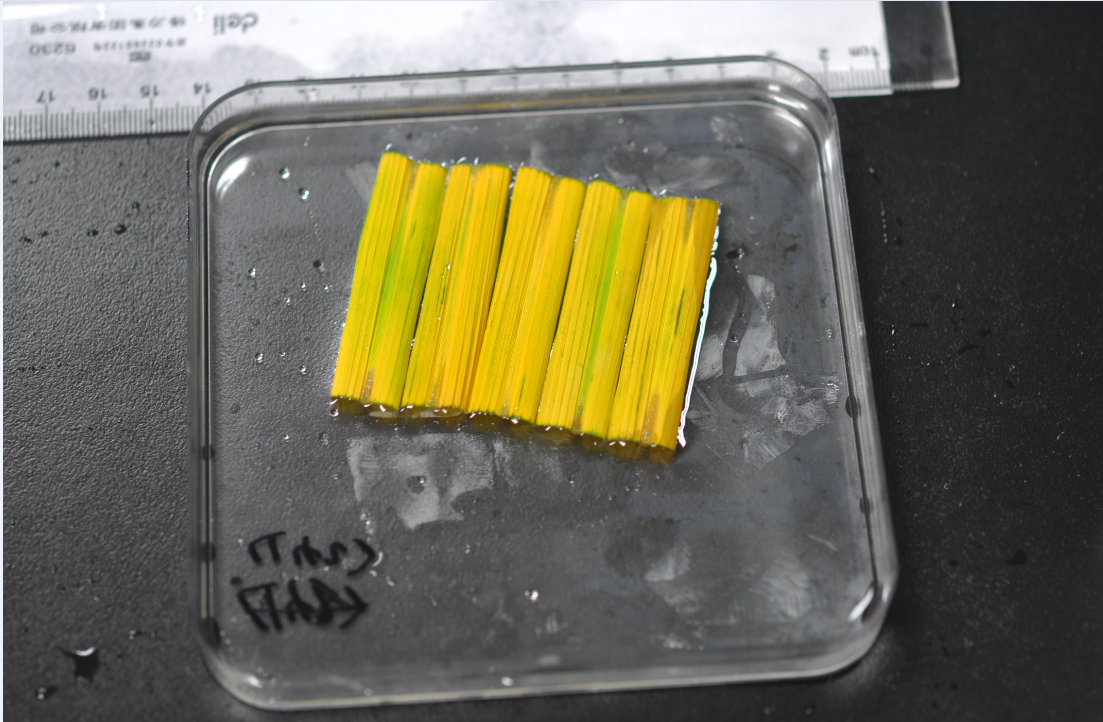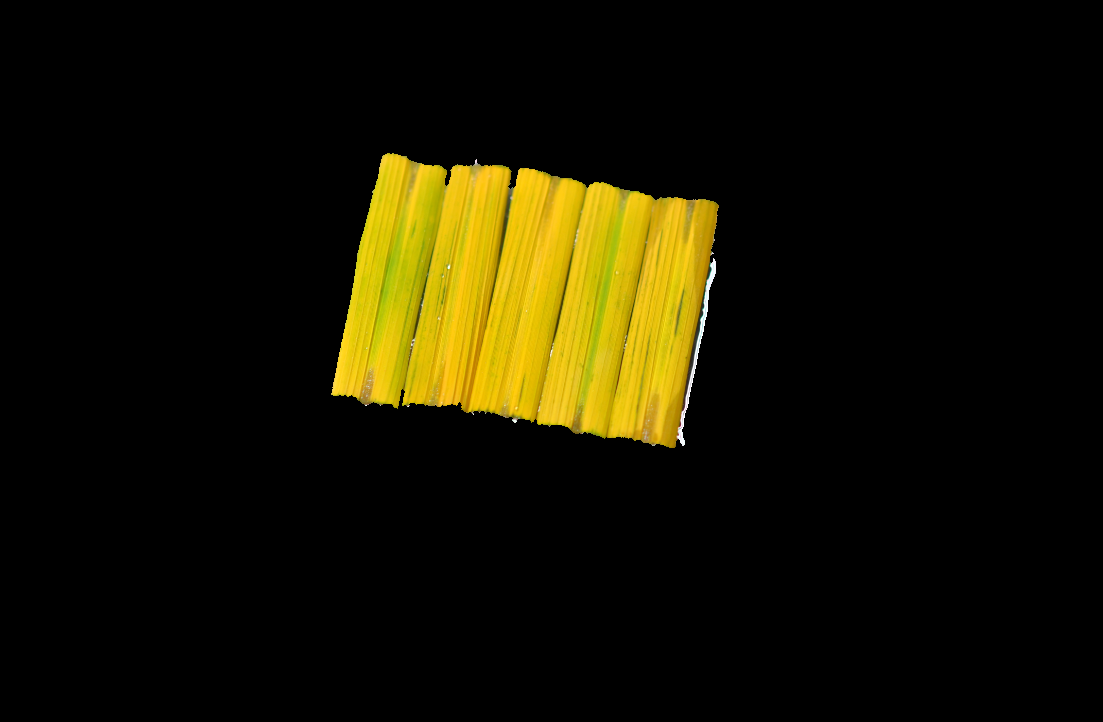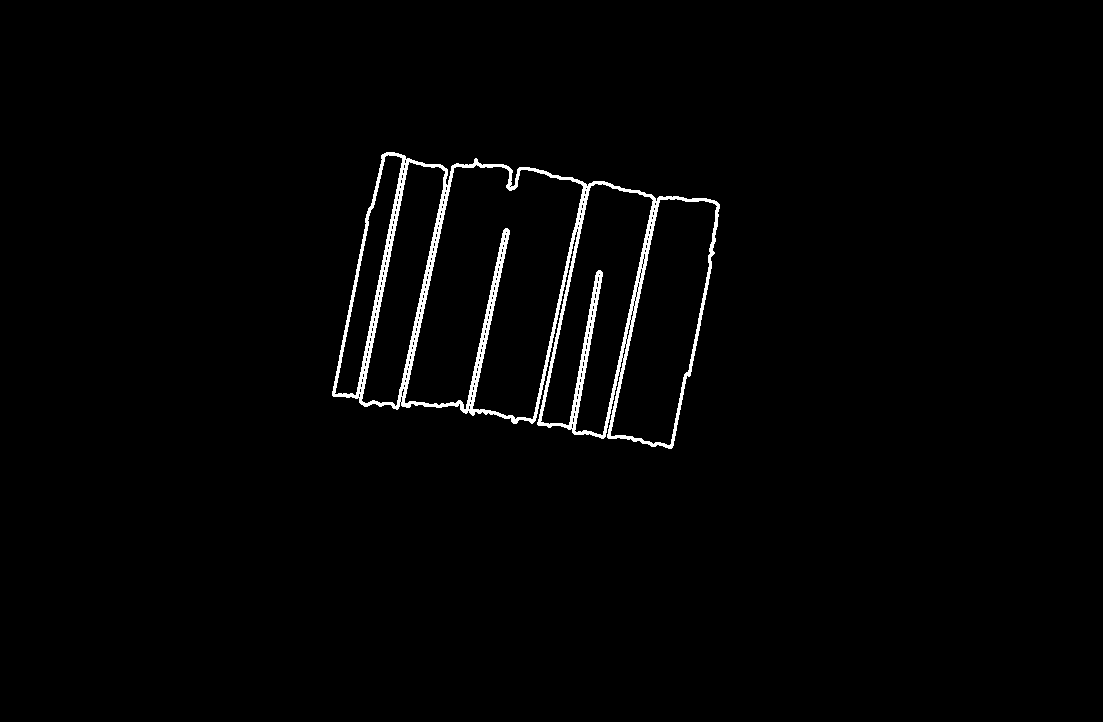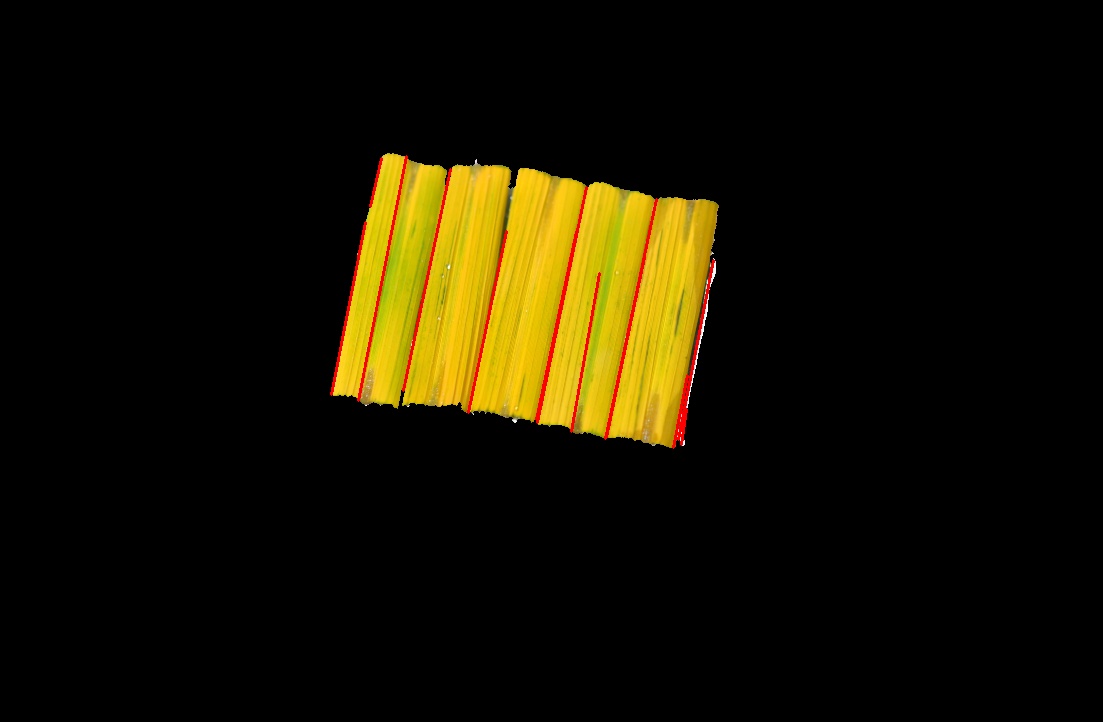

There are 5 leafs stick together after segmentation(I do it by watershed), how 


How could I separate the whole leaf into 5 independent leaf(blob)?The ultimate purpose is collect the BGR value of each leaf(leaf1, leaf2, leaf3, leaf4 and so on).
I am a newbie of computer vision, there are tons of algorithms I haven't learned yet.
Any algorithms are possible to solve this problem?
Edit :
According to the suggestion of GilLevi(thanks), i use houghLinesP to draw the lines on the image after segmentation.
//remove contours size which smaller than cmin or bigger than cmax
void remove_contours(std::vector<std::vector<cv::Point> > &contours, double cmin, double cmax)
{
auto it = std::partition(std::begin(contours), std::end(contours), [=](std::vector<cv::Point> const &data)
{
auto const size = cv::contourArea(data);
return !(size < cmin || size > cmax);
});
contours.erase(it, std::end(contours));
}
void cut_to_single_leaf(cv::Mat const &input)
{
cv::Mat fore_ground_edge;
cv::cvtColor(input, fore_ground_edge, CV_BGR2GRAY);
cv::Canny(fore_ground_edge, fore_ground_edge, 100, 350);
cv::Mat result = input.clone();
std::vector<cv::Vec4i> lines;
cv::HoughLinesP(fore_ground_edge, lines, 1, CV_PI/180, 80, 0, 40);
for( auto const &line : lines){
cv::line(result, cv::Point(line[0], line[1]),
cv::Point(line[2], line[3]), cv::Scalar(0,0,0), 2, 8);
}
cv::Mat binary_result;
cv::cvtColor(result, binary_result, CV_BGR2GRAY);
ContoursType contours;
cv::findContours(binary_result, contours, CV_RETR_EXTERNAL, CV_CHAIN_APPROX_NONE);
gray_result.setTo(0);
OCV::remove_contours(contours, 500, 50000);
std::cout<<contours.size()<<std::endl;
cv::drawContours(binary_result, contours, -1, cv::Scalar(255), 2);
cv::waitKey();
}
The resultsresults(use first image as an example)


The results are far from perfect.
The leftmost leaf are separated to two leafs.
The center leaf are glue as one leaf.
Question 1 :
Any good idea to find out which contours should merge together?
ex : leftmost contours should apply dilation since it is splited to two leafts
Question 2 :
How could I open the leaf of center?
try erosion and open, but the results are not good, hard to predict
Question 3 :
Any other algorithms are good to detect multiple similar objects in a still image?
just study SIFT and SURF, they could not detect multiple objects in a still image.
I can not separate the image into different ROI and apply SIFT or SURF, because the orientation
of the leafs are different in the images.








